Lost in America
Thursday brought the second genuinely cold morning of what passes for winter in the green heart of Texas, the dormant prairie grasses covered in frost and the ground wrapped in fog as the sun started to come up. The fog had mostly burned off by the time the dogs and I got down to the river, but there was still enough to make the flocks of overwintering ducks feel like they could take it easy as we passed, blue beaks bobbing in the fertile shallows by the erosion control failure people call Secret Beach.
To the west, where the herons rook in the tall cottonwoods that grow up out of the old dump, you could see the construction crane helping a new parking garage rise up above the treetops, a reminder that this little stretch of what seems like wild river is in the middle of the fastest growing part of the fastest growing city in America. The setbacks are meant to keep human structures hidden from the river, but sometimes the angles work out differently, producing a temporal confoundment that suits the moment.
A little further upriver, right at the top of the dam, they are expanding the corporate cloud factory built before the pandemic on a site previously occupied by affordable housing for working people. Crappy apartments was the official term at City Hall, hogging a prime site by a park along the section of the river that has been tamed by civil engineers, right where all the trails from the south used to converge at the best of the low water crossings. Now the prophetic name of the corporation shines over the water at night, in sharpened scarlet capital letters borrowed from an old Star Trek movie, trying to look like the future while firmly tethered to the 90s.
The world’s largest database management company announced this week that they are giving up on California and making that new building their global HQ. Maybe it’s because they are named after the priestesses who could predict the future that the local business pundits seems so excited about what the news portends. They might even be right, if you think the real signs of the future are inside our screens.
The first bluebonnets were sprouting out of the sandy bank as we walked in the other direction, away from town. Bluebonnets are not really a sign of ecological health, as much as we love them. They thrive in recently disturbed areas that are just beginning to recover, like pastures, highway medians, and this zone along the river where they used to dredge gravel, a spot where the disinclination of other plants to take root makes you wonder what else is there that you can’t see. I often find fresh carcasses in that spot, and you can see why—a little clearing between the densely wooded floodplain and the shorter trees that clump along the waterline, where the coyotes can drag their deer kill for family dinner, and leave leftovers for the vultures of morning.
There were no rib cages sticking up out of the sand Thursday morning. A few tracks of Canis latrans in the sand, near a big black trash can that has been sitting there for a few years now, since the last big flood. A little further on, where the invasive cane has taken over, we came upon a bright blue tent tucked perfectly into the foliage, zipped closed as if occupied, a wooden pallet as its flotsam front porch. We were tempted to look inside, but some edgeland mysteries are best left that way.
As I scanned the ground for evidence of wild life, I came upon an empty can of America.
They made those cans in the summer of 2016, part of a branding campaign intended “to inspire drinkers to celebrate America and Budweiser's shared values of freedom and authenticity” and “remind people from sea to shining sea to embrace the optimism upon which the country was first built.” They didn’t mention that the brewery is owned by Belgians, who also make Corona, another brand ready for a Zeitgeist-channeling rebranding. Looking at this alluvial artifact, there in a spot where one sometimes find man-made objects from hundreds and even thousands of years ago, I thought about how long ago the summer of 2016 feels from the winter solstice settling in at the end of 2020.
We walked on to the spot where the river widens at the bridge, and the wild water birds always congregate in bigger flocks. The ducks mostly moved off at the sight of the dogs and the camera, but there was an osprey in a tree looking over a spot where the main channel narrows and deepens and the current moves faster, backlit by the rising sun, the wet feathers of its head spiking in the cold wind like some gelled mall punk.
Last Sunday our neighbors hosted a small socially distanced and masked holiday gathering where their own yard looks over the river, and three of us stood there holding our own cans of America and admiring another osprey, or maybe the same one, on an afternoon hunt. As the bird aborted its chase and then alighted on a tree for a break, we got to talking about how much energy they must expend on each dive, and how high the cost of failure to get the prize.
The osprey aren’t supposed to be this far inland, if you read the bird guides. Maybe they are dated, but the health of the winter fisheries and riparian habitat here in the shadow of the new tollway below the cloud factory is a promising sign of the possible. The trio of caracara I saw cruising low over our yard as we returned home Thursday morning are a reminder that the scavengers are the city’s true familiars, the animals that thrive on our capacity for exterminating other animals without even knowing it.
Let’s get lost
The photo bot served up this favorite picture from one year ago this week, of a patchwork coyote vogueing at our back fence like some 1970s Chupacabra. It’s the photo that, when I pulled it off the trailcam and saw those colors, really inspired me to start compiling these Field Notes. I suppose it’s the spot of mange that gives it that look of having its coat stitched on, but the intensity of the burnt orange in its fur and the way its palette matches its autumnal surroundings, is what’s so beautiful. From the first time I saw one shimmering like quicksilver on an ice-covered Iowa wetland, coyotes have always impressed me with the way their coats allow them to baffle the light and disappear right before your eyes.
Earlier this year, not long after I had begun this newsletter, my friend the writer, rare book dealer and vegetarian omnivore Henry Wessells asked me if I would answer the question: “how do you choose the path of your morning walk?” Maybe it’s because I don’t really think about it as an active choice that I have taken so long to properly respond. But the winter holidays, with the time they offer for long wanders in a season of defoliated forests, is a good time to offer some thoughts on how to track the uncanny without going far from home.
The cool kids used to call it the dérive, the psychogeographical idea of hacking one’s mode of traveling through the city. Not so much a technique as an attitude, an active but intuitive way to alter normal patterns and ways of experiencing one’s environment that, done right, can break the malaise and rekindle wonder. Almost like surfing. The drift. Following the flow, while actively trying to get lost, and thereby creating opportunities for unexpected discovery. A trip without a plan.
A very simple variant I use when I visit another city is to pick a destination on the opposite side of the city, and walk to it, not really knowing what’s between here and there, following the most interesting routes that appear along the way. Not that different from how I approach writing a novel, with a clear sense of the starting point and a specific vision of the end but no certain idea of what’s in between.
You don’t need any Situationist mumbo-jumbo, maps, or manuals to find wonder in the city (though apparently there is an app to teach you how to drift). There are really just three simple rules that work for me: (1) go where you’ve never been, (2) go where you’re not supposed to go, and (3) seek out the green, especially where it’s not supposed to be.
I’ve been following these rules since childhood, long before I was conscious of them. Make your own shortcuts. Walk the places that actively exclude pedestrians. Find your way into empty lots and urban woods, even when you have to jump a fence or follow some creepy footpath to do so.
Easy to do if you are a little middle class white kid roaming a colonized suburban space, or an adult white man with command of the law and its pliability as a product of language. But I’ve practiced it in other countries, across oceans, and it always works, as long as you are alert to danger, which usually means avoiding other people, something you need to do anyway if you want to have the kind of walk where you might encounter urban wildlife.
Sometimes it involves following a trail you have never taken, maybe a trail made by animals, or a trail made by people. The best discoveries usually happen when there’s no trail at all. The empty lot reimagined as a downzoned Denali, a place where no path is to be repeated, for fear of training the wild.
If you look up the the word bushwhacker in the OED, it suggests it was borrowed from the Dutch bosch-wachter, for forest-keeper, a connection that makes perfect sense. The city can also be treated as a forest, and if you think about it that way, you might even help turn it into one for real.
Developing your own way of seeing the path before you with fresh eyes, maybe even as something other than a path, can also help you learn to travel through time. There’s the revelation that, as you explore the same spot in different ways on different days, it’s really a different spot every time. Walking the city with eyes tuned for wildlife, scanning the imaginary horizon line around you, you may experience that uncanny connection to your neolithic ancestors as you spot a deer within missile range and momentarily feel the true purpose of being bipedal. Bearing witness to the slow, subtle changes in the landscape over the season, as the waters and terrain shift, and the pockets of wilderness come and go, you start to see into deep time as you walk, in the manner suggested by the excellent piece by Vincent Ialenti at BBC Future I shared last week.
The other easy trick is to walk during the crepuscular hour, the liminal space between night and day, when the wildlife and the wonder always come out.
If it’s too cold over the holidays to go get lost for real, you could stay inside and read a good book about it, like Rebecca Solnit’s A Field Guide to Getting Lost, W. G. Sebald’s Rings of Saturn, or Andrew Garcia’s Tough Trip Through Paradise. If you can’t get on a plane, you can still explore the zone around the airport.
The Year in Reading
Every year since 2015, I’ve had the opportunity to contribute to the annual roundup of writers recapping their year of reading, watching and listening collected by my good friend L. Timmel Duchamp and her colleagues at Aqueduct Press, a Seattle-based small press that specializes in feminist science fiction. My entry for this year is heavy on the feral fiction, and reading that is trying to find the way into rewilding. And mine is the eighteenth entry with many more to come before year-end, all of them full of fascinating works to add to the list.
The Pleasures of Reading, Viewing, and Listening in 2020, pt. 18: Christopher Brown, at Aqueduct Press.
Introducing the Alex Brown Foundation and Residency
In my non-existent free time, I have been working on a new project intended to honor the legacy of my brother Alex Brown, a painter and musician who died unexpectedly and too young last year of an aneurysm. In partnership with Mainframe Studios, the nonprofit artists’ space where Alex had his studio in downtown Des Moines, we are establishing a new residency intended to help other artists experience the breakthroughs possible in the unique working environment of that oddball Midwestern city. For more about Alex, the foundation, and the residency, please check out this wonderful new site put together by Alex’s good friends John and Lucy Solarz of the design studio Now Now.
Web: The Alex Brown Foundation
For those who made it to the end, here’s a shot from five years ago this week of the sun coming up through the fog along the urban river. Look close and you might see the heron.
Have a safe and merry holiday.




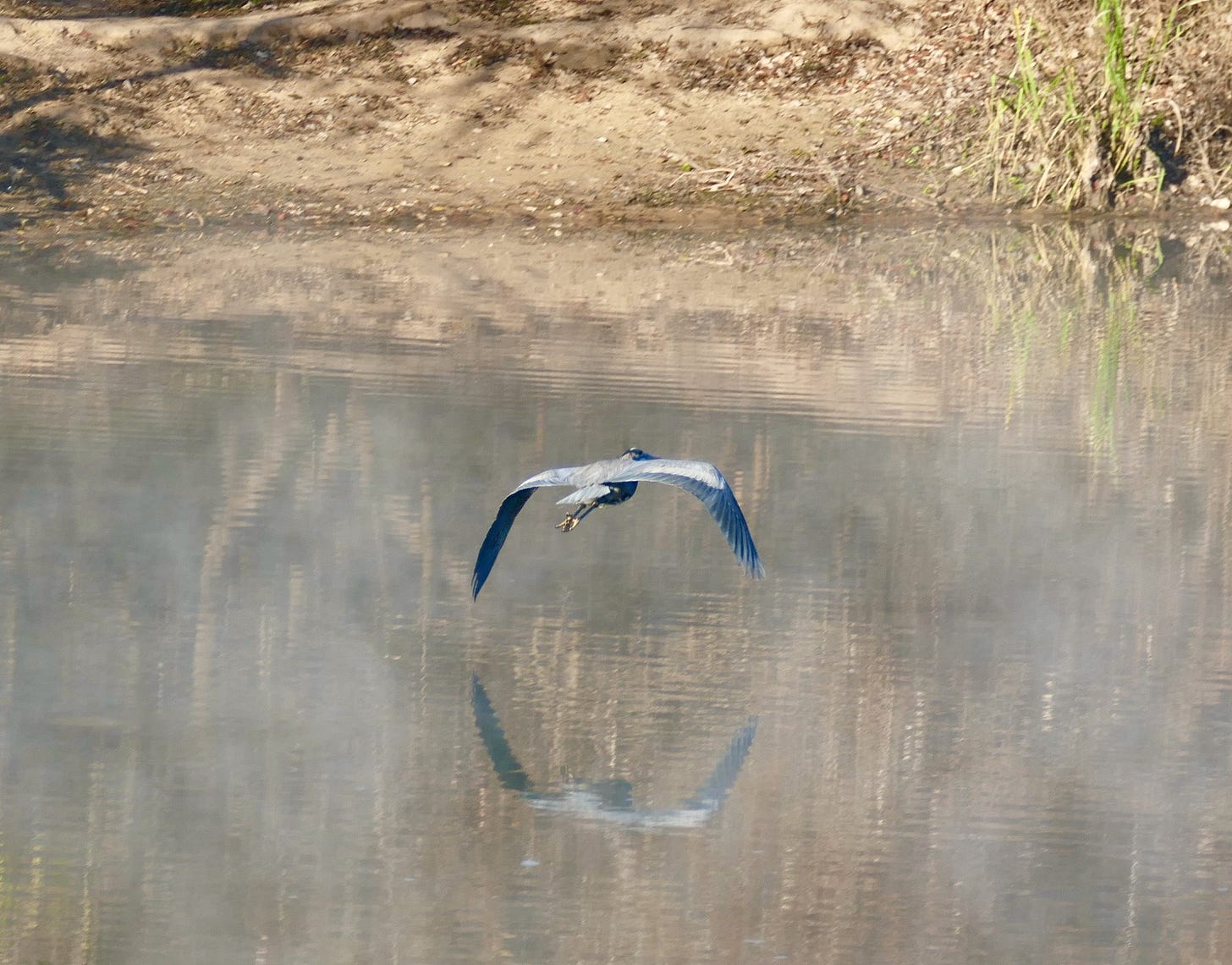
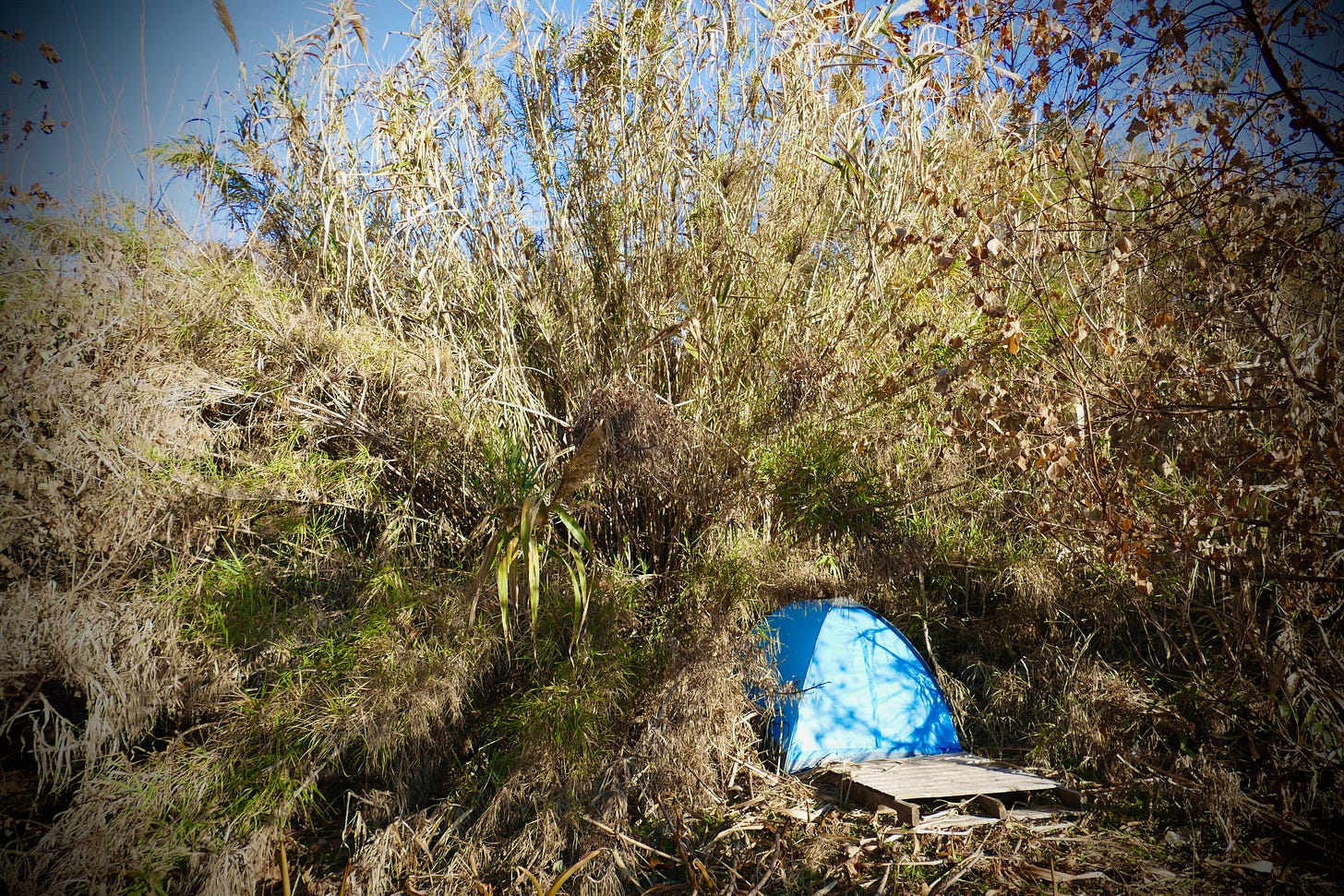
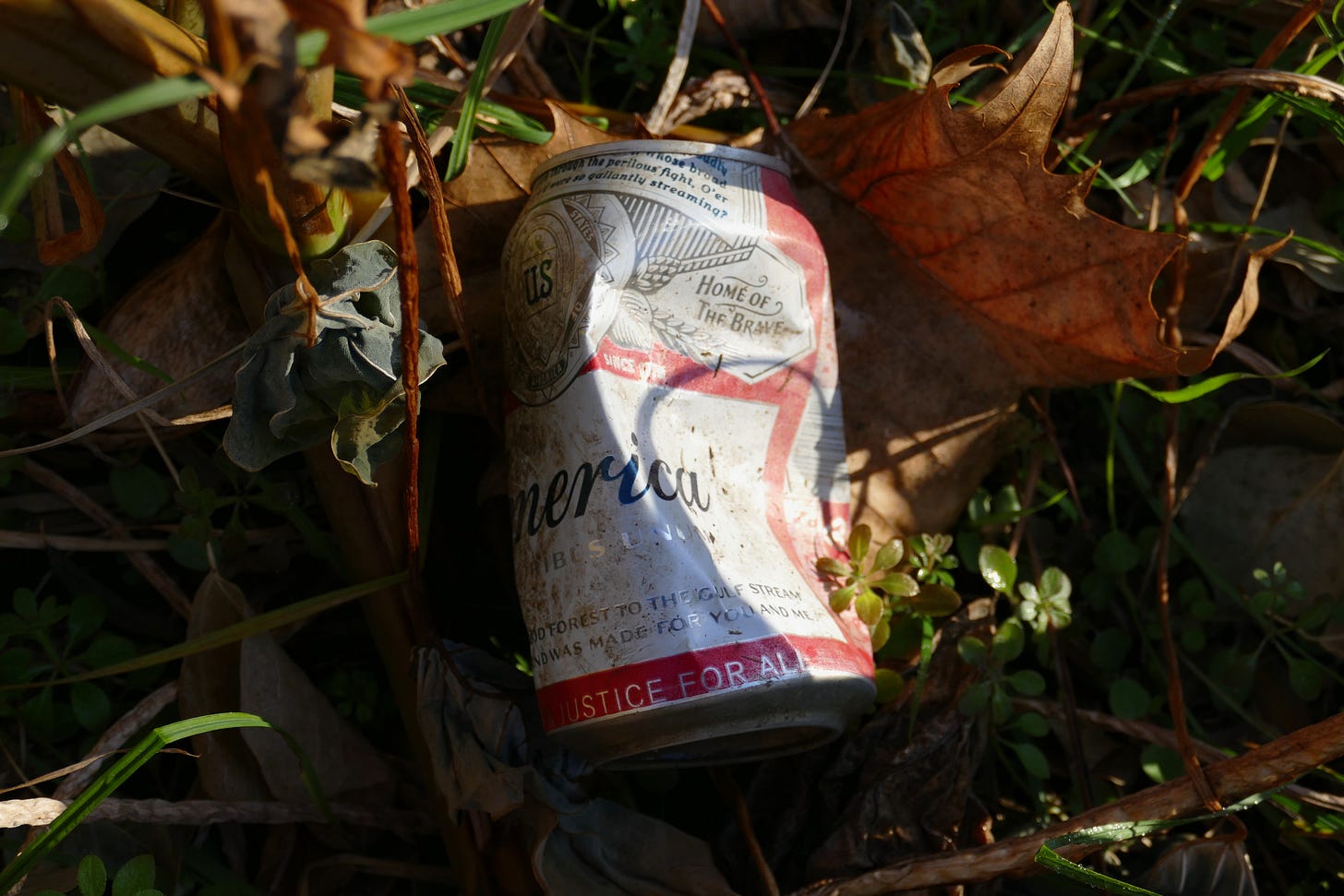


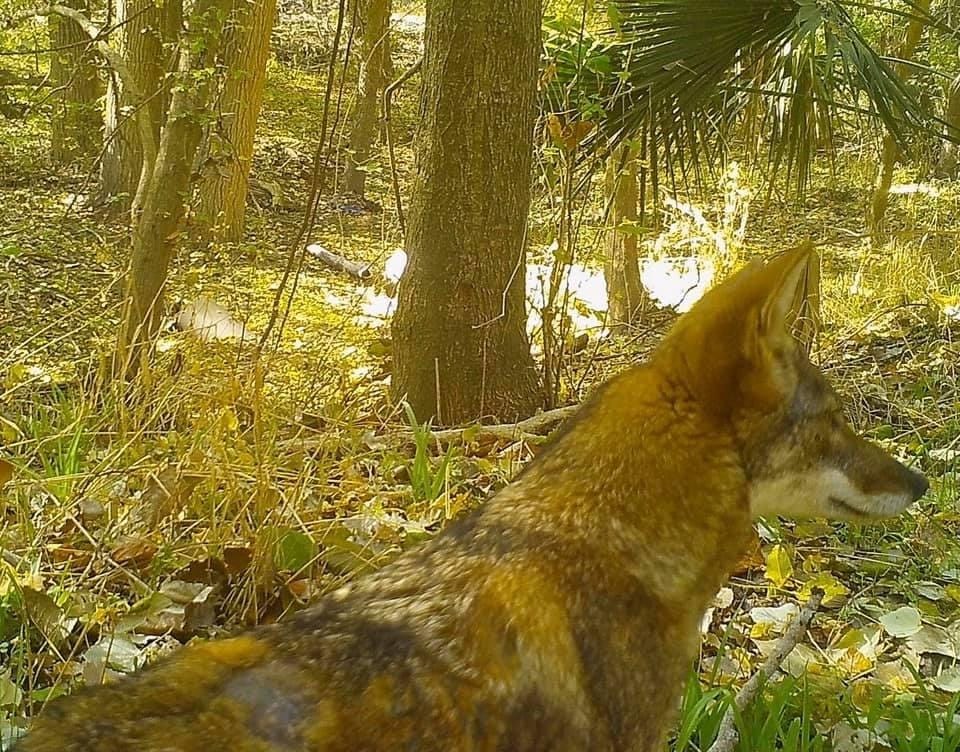




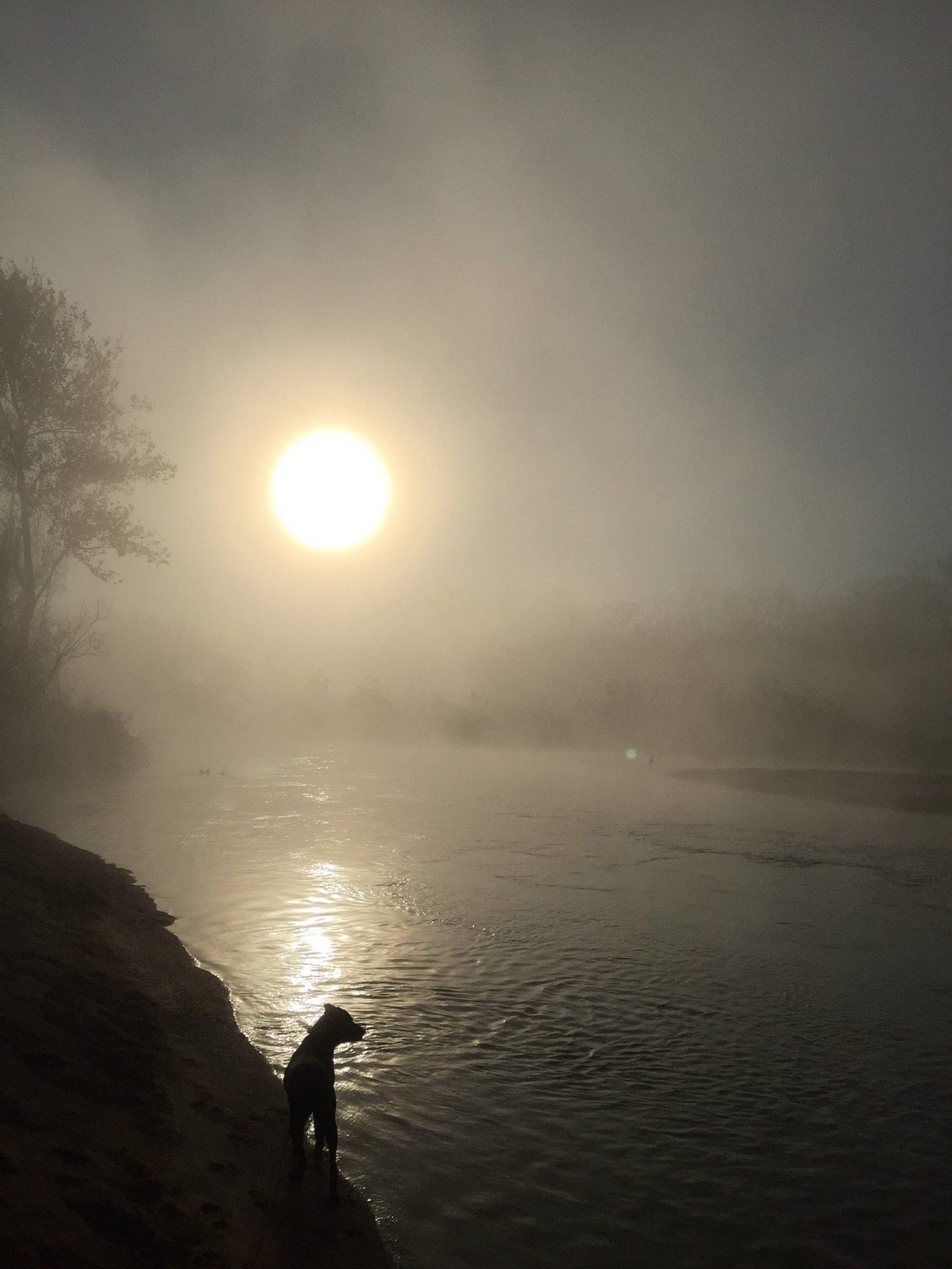
This read made me happy this morning. Thanks, Chris, for continued inspiration. Searching for the trail lesser traveled is a good approach to so many things in this short life. Happy Holidays to you and the family.